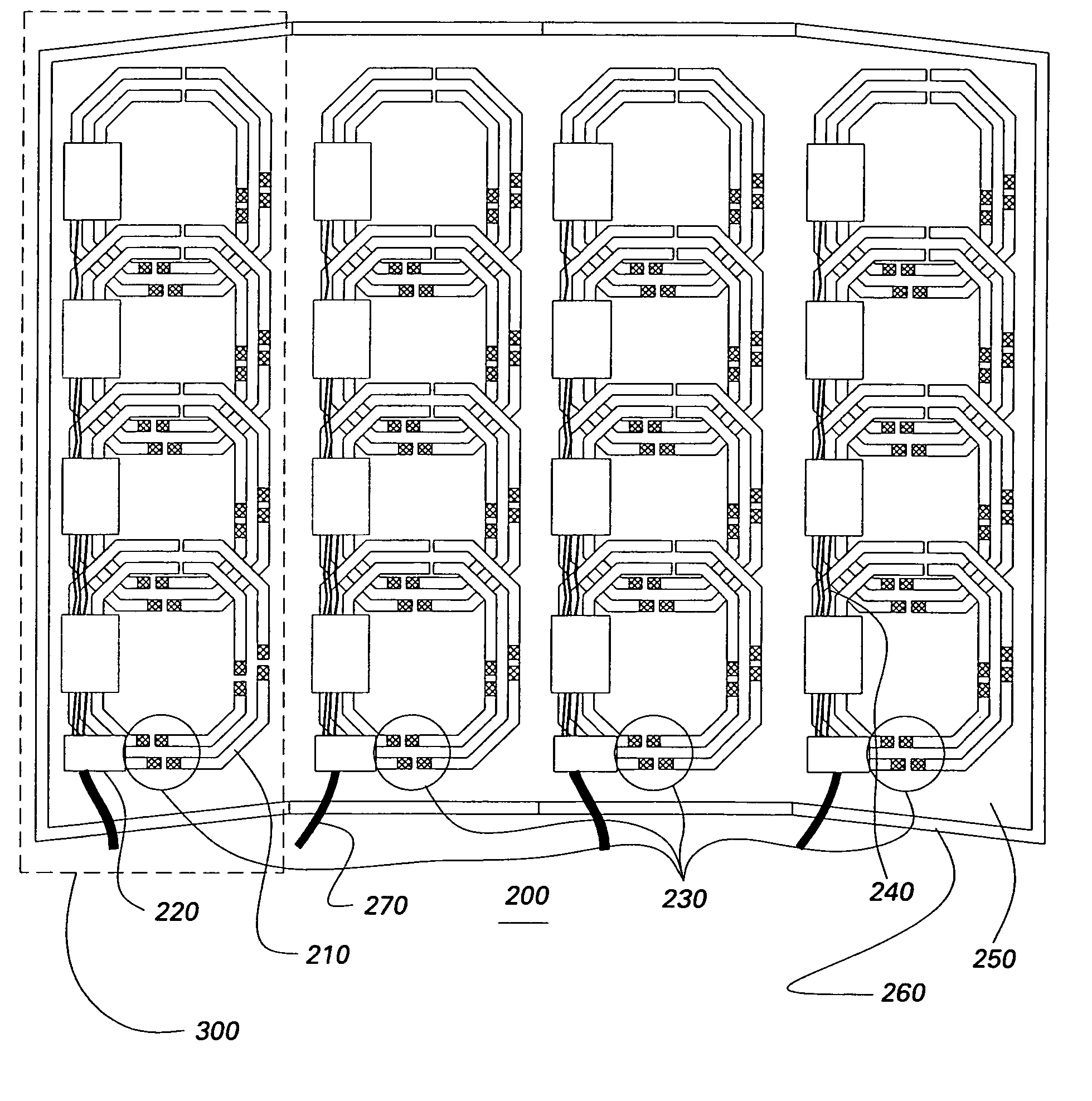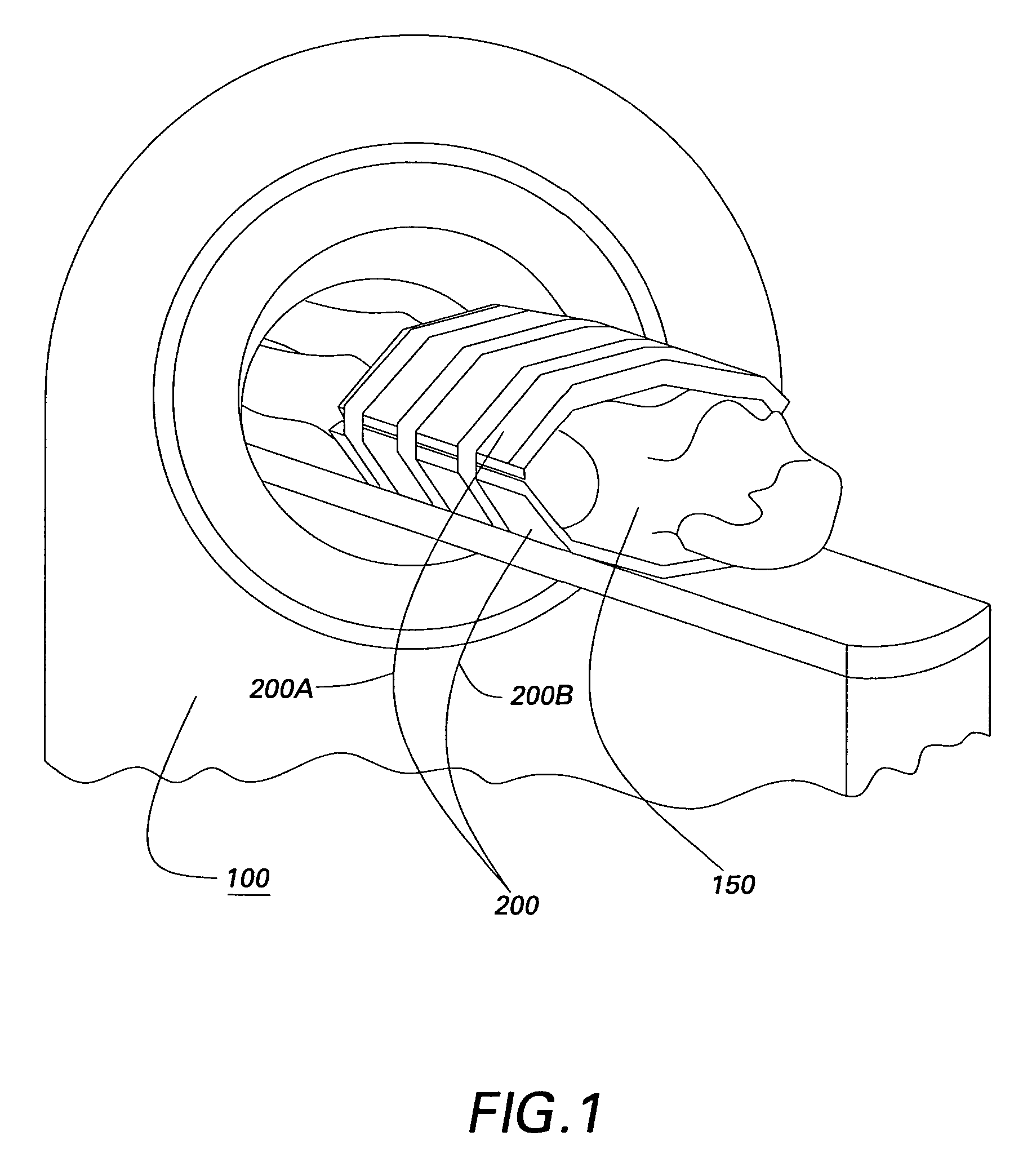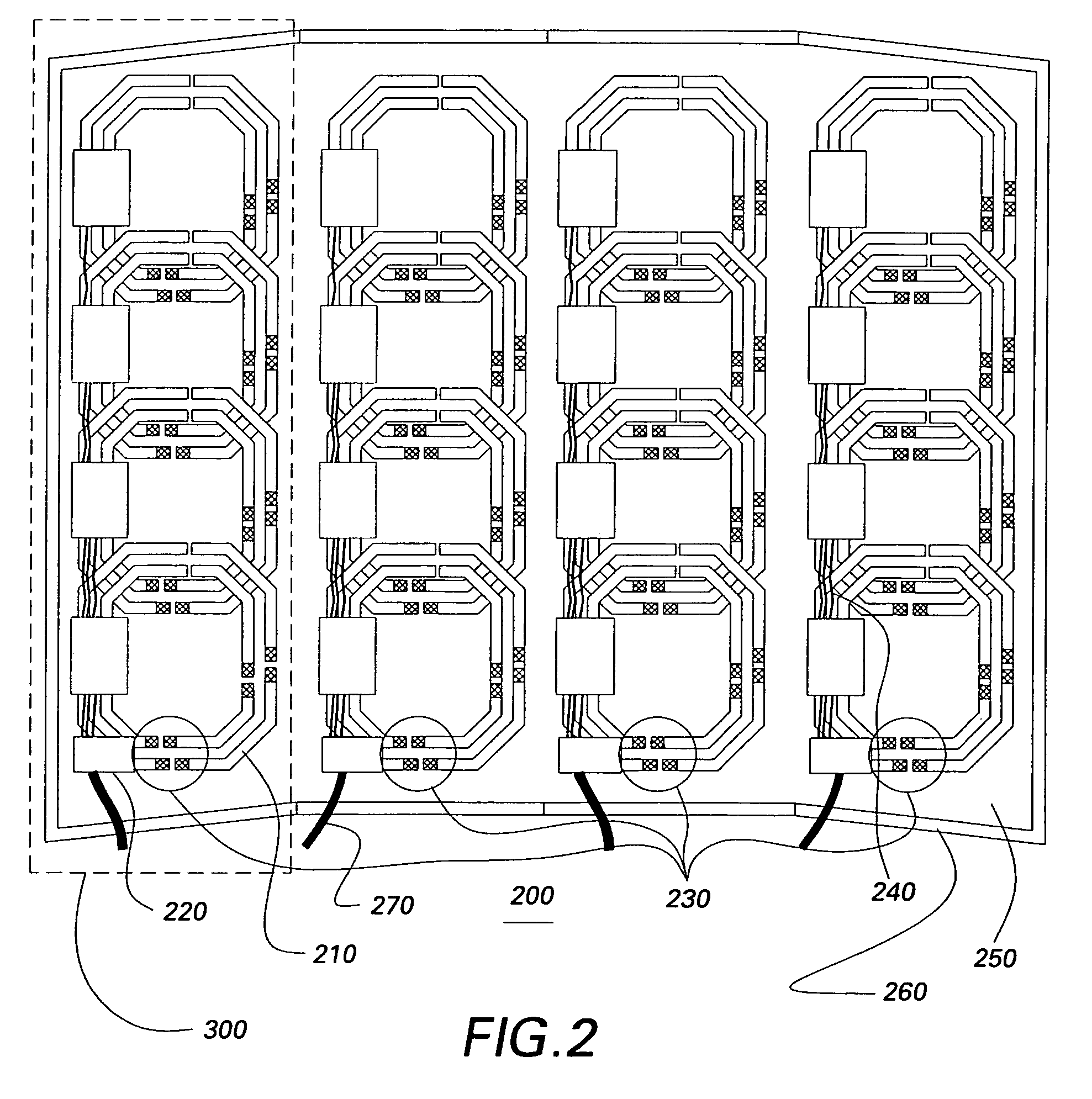Multi-turn element RF coil array for multiple channel MRI
a multi-turn element, coil array technology, applied in the field of magnetic resonance imaging (mri), can solve the problems of reducing the loading factor, affecting the accuracy of k-space matrix filling, and affecting the accuracy of mri filling, etc., to achieve high loading factor and high q
- Summary
- Abstract
- Description
- Claims
- Application Information
AI Technical Summary
Benefits of technology
Problems solved by technology
Method used
Image
Examples
Embodiment Construction
[0018]Referring initially to FIG. 1, an exemplary magnetic resonance imaging (MRI) system 100 is shown. MRI system 100 operates in a well-known manner and includes a computer, which controls gradient coil power amplifiers through a pulse control subsystem. The pulse control subsystem and the gradient amplifiers together produce the proper imaging gradient waveforms Gx, Gy, and Gz, for example, for a spin echo, a gradient recalled echo pulse sequence, a fast spin echo, or for other types of pulse sequences as are known to those skilled in the art. The gradient waveforms are connected to gradient magnetic field coils, which are positioned around the bore of an MR magnet assembly so that gradient magnetic fields Gx═δB0 / δx, Gy═δB0 / δy, and Gz═δB0 / δz, are impressed on the polarizing magnetic field B0 from the MR magnet assembly.
[0019]The pulse control subsystem also controls a radio frequency synthesizer that is part of an RF transceiver system. The pulse control subsystem also controls a...
PUM
 Login to View More
Login to View More Abstract
Description
Claims
Application Information
 Login to View More
Login to View More - R&D
- Intellectual Property
- Life Sciences
- Materials
- Tech Scout
- Unparalleled Data Quality
- Higher Quality Content
- 60% Fewer Hallucinations
Browse by: Latest US Patents, China's latest patents, Technical Efficacy Thesaurus, Application Domain, Technology Topic, Popular Technical Reports.
© 2025 PatSnap. All rights reserved.Legal|Privacy policy|Modern Slavery Act Transparency Statement|Sitemap|About US| Contact US: help@patsnap.com



